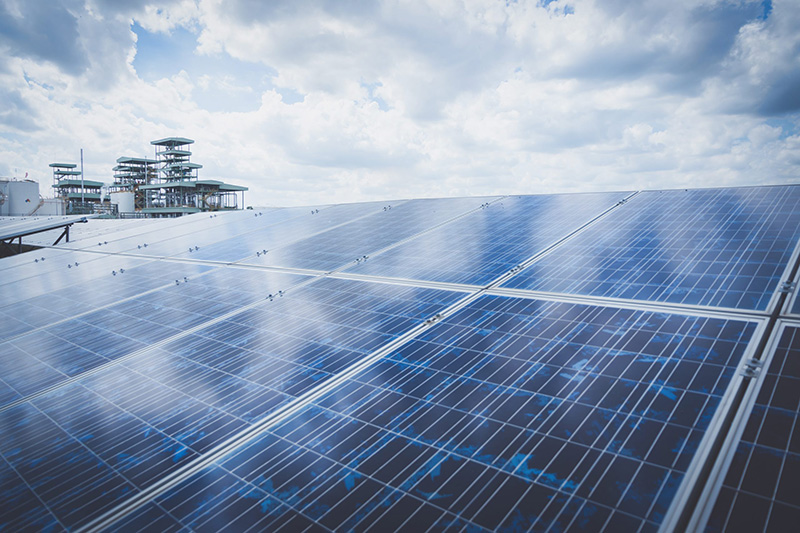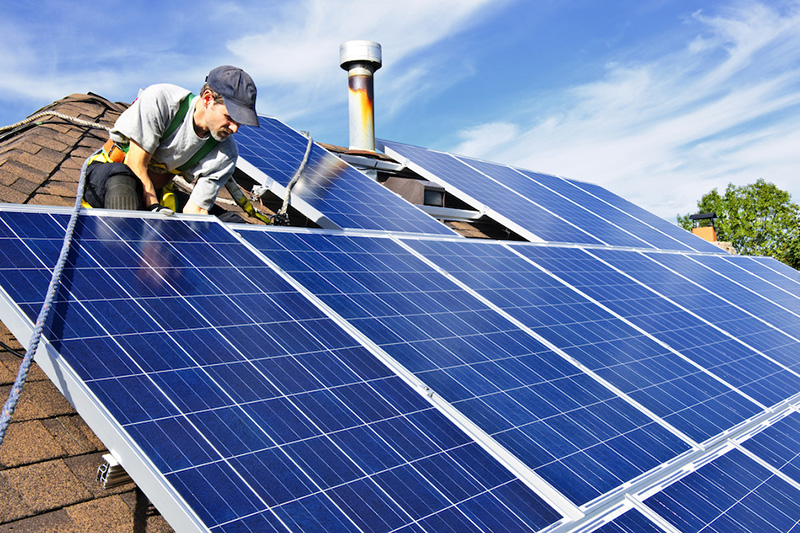Description
In 2023, modern solar panels typically last between 25 to 30 years, with their efficiency gradually decreasing over time. However, with proper maintenance, they can still produce significant energy beyond this period, even if at a reduced capacity. High-quality panels and advanced manufacturing techniques have contributed to this impressive lifespan.

Introduction
Solar panels, often seen on rooftops and vast fields, have become one of the most prominent renewable energy sources worldwide. They offer a sustainable solution to energy production by converting sunlight directly into electricity.
Brief overview of solar panel technology
Solar panels, technically known as photovoltaic (PV) panels, work by absorbing sunlight with photovoltaic cells, which generate direct current (DC) energy. This energy is then converted to alternating current (AC) by an inverter, making it usable for homes and businesses. The fundamental material at the heart of most solar cells is silicon, which has unique properties conducive to the photovoltaic effect.
There are primarily three types of solar panels:
- Monocrystalline Panels: Made from a single pure silicon crystal, these panels are recognized for their dark black color and high efficiency. They're a bit more expensive but generally come with a longer lifespan.
- Polycrystalline Panels: Comprising multiple silicon crystals, these panels have a bluish hue. They're slightly less efficient and cheaper than monocrystalline ones.
- Thin-film Panels: Unlike the former two, thin-film panels are made by placing one or more films of photovoltaic material onto a substrate. They're the least efficient but are versatile and can be used in various applications.
It's worth noting that with advancements in technology, newer types, such as
perovskite solar cells, are emerging, showing promise for even higher efficiencies at potentially lower costs.
Historical progression of solar panel lifespan
The journey of solar panels began in the 19th century, but the most significant strides have been made in the past few decades. In the 1950s, the first silicon solar cell was developed with an efficiency of about 6%. Compare this to today, where top-tier panels exceed 20% efficiency.
Historically, solar panels from the 1970s and 1980s had lifespans of around 10-15 years. Thanks to technological advancements and better manufacturing practices, modern panels boast lifespans nearing 25-30 years. Furthermore, degradation rates (how much the efficiency of the panel decreases per year) have improved. Previously, it wasn't uncommon to see degradation rates of 1% per year. Now, many high-quality panels have rates as low as 0.3% per year. This means that even after 25 years, a panel might still operate at around 90% of its original efficiency.
With the ongoing research and development, it's expected that the efficiency and lifespan of solar panels will continue to improve in the coming years, making them an even more attractive energy source.
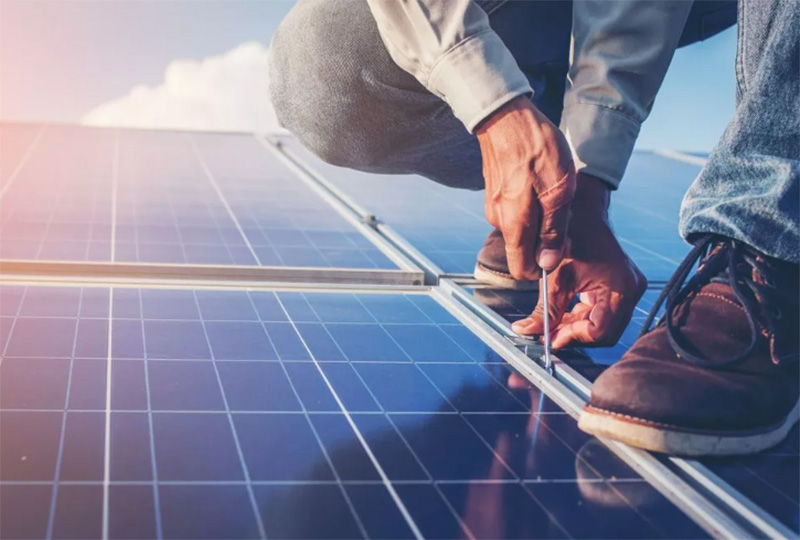
Factors Influencing Solar Panel Lifespan
The lifespan of a solar panel isn't just about the number of years it can generate electricity. It's about how efficiently it can do so over those years. A variety of factors can influence this, ranging from the materials used in the panel to the conditions it faces once installed.
Material Quality
The quality of materials plays a pivotal role in determining the longevity and efficiency of a solar panel. Higher quality materials often result in panels that can resist degradation better and maintain their efficiency over longer periods.
- Silicon Quality: Pure silicon tends to offer better performance and longevity. Monocrystalline panels, known for their high silicon purity, generally have a longer lifespan compared to polycrystalline panels.
- Protective Materials: The outer layers, including the glass and backsheet, protect the inner components from environmental factors. UV-resistant and durable backsheets and high-transparency, tempered glass can enhance a panel's lifespan.
It's always worth checking the warranty provided by the manufacturer, as this can give insights into the material quality. Companies that use higher-quality materials often offer longer warranties.
Manufacturing Techniques
How a solar panel is made can be just as crucial as what it's made from. Precision in manufacturing can minimize defects, ensuring consistent and long-lasting performance.
- Cell Cutting: Advanced techniques, like laser cutting, can reduce micro-damage to cells, improving their longevity.
- Assembly: Proper assembly ensures all components fit well together, minimizing the chances of moisture or other elements infiltrating the panel. With the advent of technologies such as heterojunction technology (HJT), solar cells can achieve better performance and durability.
Weather and Environmental Conditions
Solar panels are exposed to the elements, and their surrounding conditions can significantly impact their performance and lifespan.
- Temperature: Panels in extremely hot climates can face reduced lifespans due to increased degradation from high temperatures. For instance, in desert regions, panels may degrade at a slightly faster rate.
- Moisture: In coastal areas or places with high humidity, salt mist or prolonged dampness can affect the panel components.
- Physical Stresses: Hail, snow, and even strong winds can physically damage panels. Areas prone to such conditions require panels certified for higher resilience.
Installation Quality and Angle
A well-installed solar panel can function optimally, while a poorly installed one can face premature issues.
- Angle and Orientation: Ensuring the panel is at the optimal angle to capture sunlight, typically equal to the latitude of the location, can maximize efficiency. Furthermore, in the Northern Hemisphere, panels should generally face south for best results.
- Mounting and Support: Secure mounting systems prevent physical damage from strong winds or other forces. It's also essential that there's adequate ventilation behind the panels, as overheating can affect their performance and lifespan.
Understanding these factors can guide potential solar adopters in making informed decisions about which panels to purchase and how best to install and maintain them.
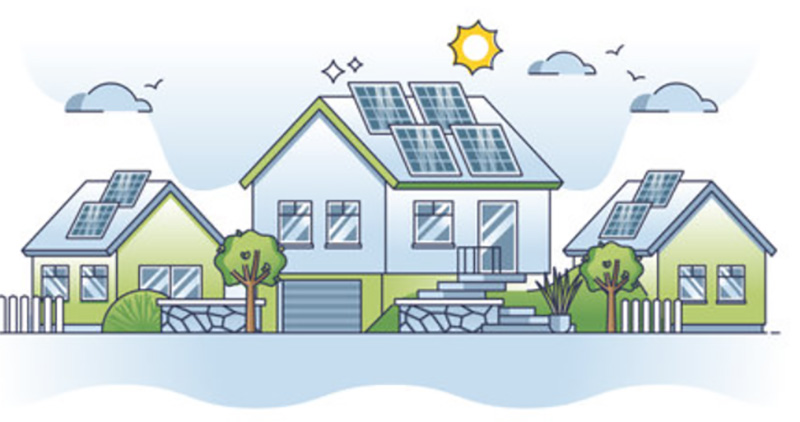
Typical Lifespan and Degradation Rates
In the world of solar energy, the efficiency and longevity of a solar panel are often intertwined. When evaluating a solar panel's quality and cost-effectiveness, it's essential to understand its typical lifespan and the rate at which its efficiency diminishes over time, known as the degradation rate.
Current Industry Standards for Solar Panel Lifespan
Today's solar panels, bolstered by advancements in technology and manufacturing, offer impressive lifespans that make them a viable long-term investment. Here's a snapshot of current industry standards:
- Monocrystalline Panels: With their high silicon purity, these panels typically last 25 to 30 years. However, "lasting" doesn't mean they stop producing electricity after this period; it means their efficiency might have dropped below a certain desirable percentage.
- Polycrystalline Panels: Generally, they have a slightly shorter lifespan than monocrystalline panels, averaging between 23 to 27 years.
- Thin-film Panels: Being different in their construction and materials, thin-film panels can have varied lifespans. On average, they last about 20 to 25 years.
Most manufacturers provide a 25-year warranty, aligning with these lifespan estimates. However, it's essential to note that this warranty often guarantees that the panel's efficiency won't drop below 80% before the 25-year mark.
How Degradation Rates Impact Overall Performance
Degradation rate is a measure of how much the efficiency of a solar panel reduces each year. A smaller degradation rate signifies a longer-lasting, high-performing panel.
- Average Degradation: The industry average for solar panel degradation is around 0.5% to 1% per year. This means if a panel starts at 100% efficiency (though no panel truly starts at 100%), it would be around 90% efficient after 10 years at a 1% degradation rate.
- High-Quality Panels: Some top-tier panels, thanks to superior materials and manufacturing, have degradation rates as low as 0.3% per year. Using the above example, these would be about 97% efficient after a decade.
- Impact on Energy Output: Over the years, as the panel degrades, its energy output decreases. For instance, if a 300W panel has a 0.5% degradation rate, it might only produce 270W after 20 years.
Considering the degradation rate alongside the purchase price can provide insights into the true value of a solar panel. Panels with lower degradation rates might cost more upfront but could offer better value in the long run.
Understanding the degradation rate and the factors influencing it, such as
UV exposure, can help homeowners and businesses optimize their solar investments and ensure a consistent energy supply over the years.
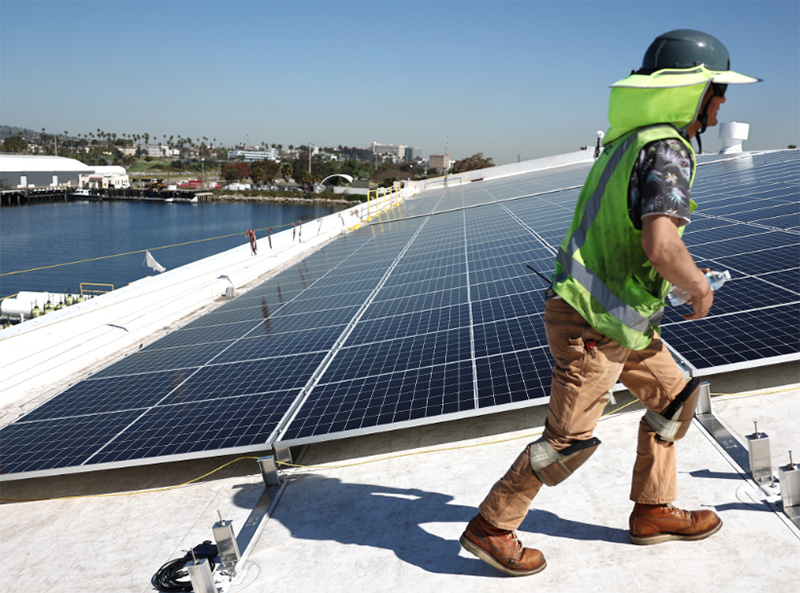
Maintenance and Optimizing Longevity
Proactive maintenance is the key to ensuring that solar panels operate at peak efficiency throughout their lifespan. Just like a car or any other long-term investment, periodic checks and minor tweaks can make a significant difference in performance and longevity. By understanding the importance of regular maintenance and addressing potential issues promptly, solar panel owners can optimize their systems' longevity and overall output.
Regular Cleaning and Inspection
Solar panels, by their nature, are exposed to the elements. Over time, they can accumulate dust, debris, bird droppings, and other materials that can obstruct sunlight and reduce their efficiency.
- Cleaning Frequency: In areas with higher levels of particulate matter in the air, such as cities or regions with frequent sandstorms, cleaning might be required more frequently – perhaps once every couple of months. In contrast, in cleaner areas, a biannual cleaning might suffice.
- Professional Inspection: It's advisable to have a professional inspect the solar installation annually. They can identify potential issues that aren't visible to the untrained eye, such as micro-cracks or issues with the inverter. They can also ensure that all connections remain tight and that the system operates at peak efficiency.
- Safety First: Always prioritize safety when cleaning panels, especially if they're installed on rooftops. Using a long-handled brush or hiring professionals can reduce risks.
Potential Issues and Common Repairs
Despite their robust design, solar panels aren't immune to issues. Timely identification and repair can prevent more significant problems down the road.
- Micro-Cracks: These can result from hail, debris, or even thermal stresses. While not always immediately detrimental, over time, they can degrade the panel's performance. Professional inspections can identify and address these early on.
- Inverter Issues: The inverter, which converts DC from the panels to AC for home use, can sometimes face issues. Regularly monitoring energy output can identify inverter problems. If the energy production drops unexpectedly, the inverter might be the culprit.
- Hot Spots: These are areas on a panel that, due to issues like micro-cracks or poor soldering, heat up more than the rest of the panel. Over time, this can damage the panel and reduce its lifespan. Using thermal imaging during professional inspections can identify these spots.
Extending Lifespan through Maintenance and Upgrades
Solar technology continues to advance, and while the panels themselves might remain functional for decades, other components of the system might benefit from upgrades.
- Inverter Upgrades: Inverters typically have a shorter lifespan than panels. Upgrading to a newer, more efficient inverter after 10-15 years can boost the system's overall efficiency.
- Monitoring Systems: Implementing a solar monitoring system can provide real-time data on panel performance, allowing for timely interventions when issues arise.
- Component Replacements: Elements like mounting systems, wiring, and connectors might degrade faster than the panels. Periodic replacements ensure the system remains secure and efficient.
In essence, with regular maintenance, inspections, and strategic upgrades, a solar system's lifespan can be optimized, ensuring maximum return on investment and consistent energy output.
Comparing 2023 Solar Panels to Past Years
Solar technology has witnessed a phenomenal evolution over the past few decades. Not only have solar panels become more efficient and affordable, but their design, longevity, and adaptability have also seen marked improvements. As we stand in 2023, let's delve into how the solar panels of today compare with their predecessors.
Advancements in Solar Technology Over the Years
The journey of solar panels from their inception to the present day is a testament to human ingenuity and our quest for sustainable energy solutions.
- Efficiency Growth: The earliest solar cells in the 1950s had an efficiency of around 6%. Today, some of the top-tier panels boast efficiencies exceeding 22%.
- Size and Design: Older solar panels were bulkier and required more space for installation. Modern panels have become more compact and versatile, catering to diverse installation needs, from vast solar farms to urban rooftops.
- Cost Reduction: In the 1970s, solar panel costs were upwards of $100 per watt. Fast forward to the 2020s, and the cost per watt has plummeted to less than $0.50 for many panels.
- Innovative Materials: The use of new materials, such as perovskite, has unlocked new possibilities in terms of efficiency and flexibility.
How 2023 Panels Stand Out
The solar panels of 2023 embody the cumulative advancements of years of research, innovation, and real-world feedback.
- Higher Efficiency: 2023 panels, on average, offer better efficiency rates than ever before. This means homeowners and businesses can derive more power from a smaller surface area.
- Durability: Enhanced manufacturing techniques and better materials have increased the average lifespan of panels, with many now exceeding 30 years of optimal performance.
- Smart Features: Integration with IoT and advanced monitoring systems allows users to track and optimize their solar energy usage in real time.
- Tongwei Solar Panels: Among the noteworthy brands in 2023, Tongwei stands out for its commitment to quality and innovation. Tongwei solar panels are known for their high efficiency, durability, and state-of-the-art manufacturing processes. Opting for such a trusted brand ensures both performance and peace of mind for consumers.
The solar panels of 2023 are a culmination of decades of innovation. They offer a compelling blend of efficiency, longevity, and value for money, marking a significant leap from the panels of yesteryears.





